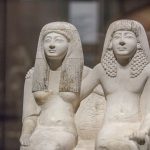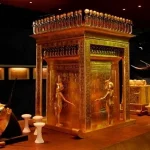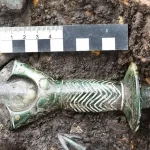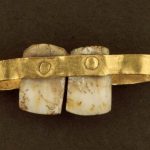Statue of the Goddess Hathor alongside Pharaoh Amenhotep II.
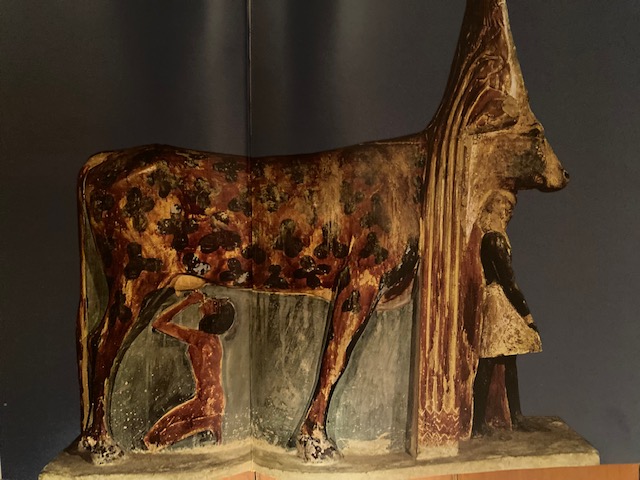
The statue of the goddess Hathor alongside Pharaoh Amenhotep II is a striking representation of divine kingship in ancient Egypt. Hathor, one of the most important deities in the Egyptian pantheon, was associated with motherhood, music, fertility, and love, as well as the afterlife.

Often depicted with cow horns and a sun disk, she also served as a protector of the pharaohs and a symbol of royal power.
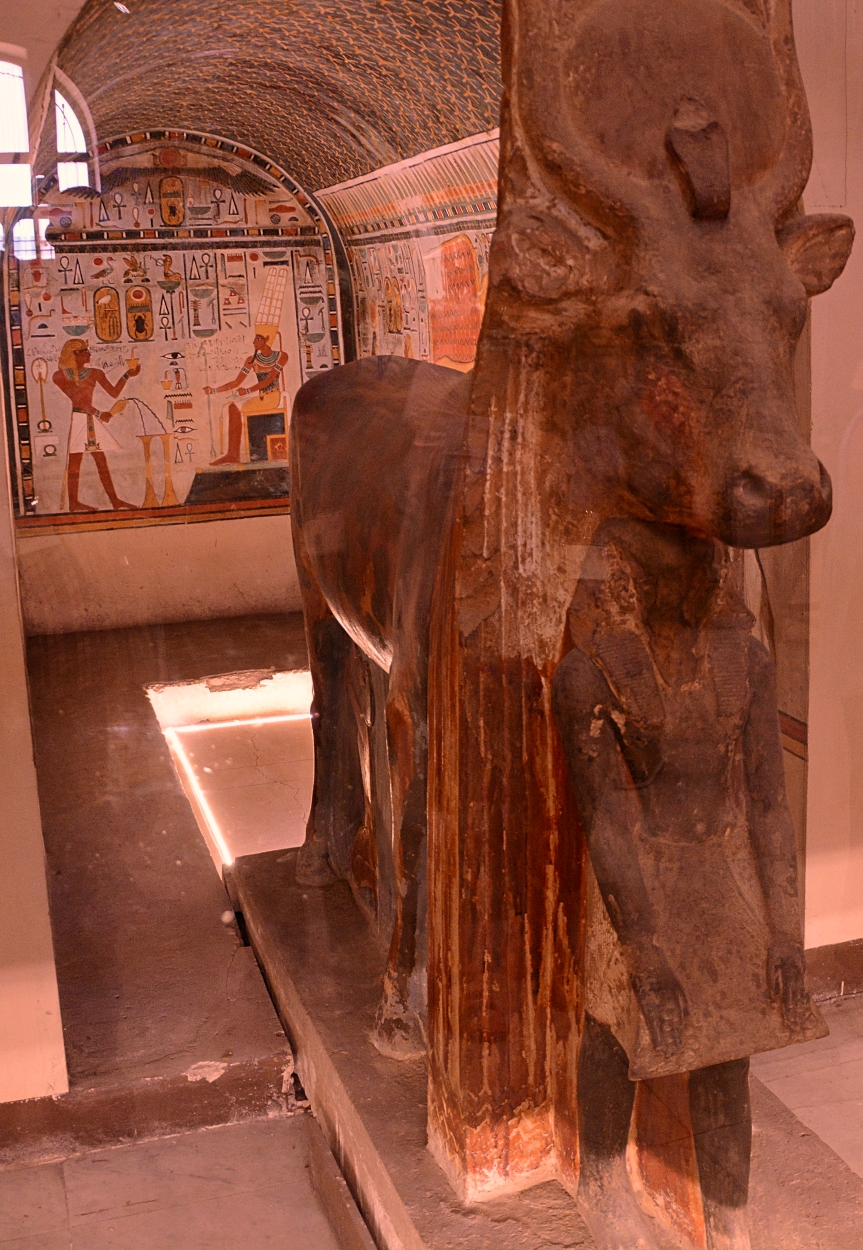
In this statue, she is shown standing or seated beside Amenhotep II, the seventh pharaoh of the 18th Dynasty (reigned c. 1427–1401 BCE), who was known for his athletic prowess and military campaigns.
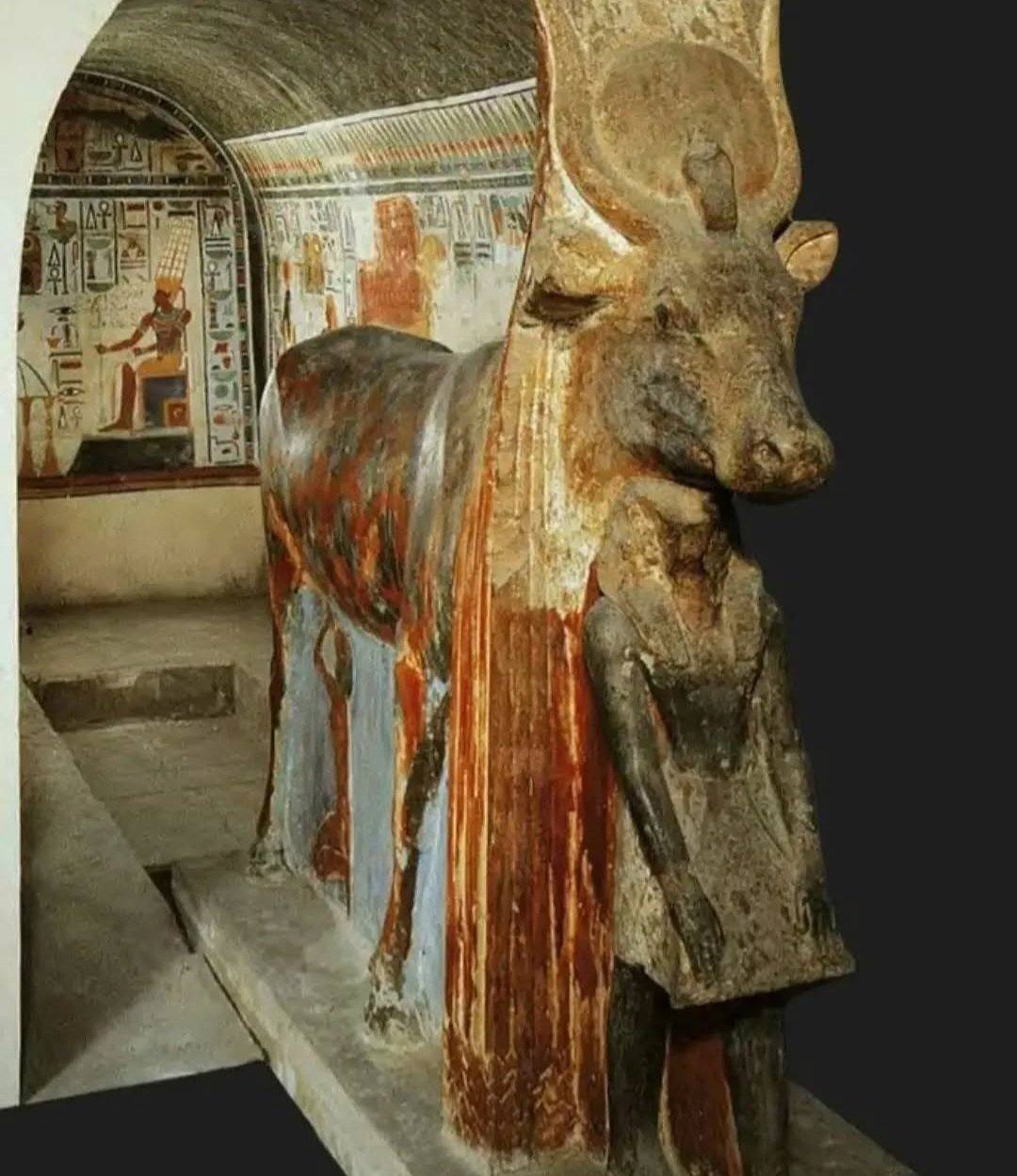
The close placement of Hathor and the king emphasizes the divine support bestowed upon Amenhotep II and reinforces his legitimacy as ruler. Such statues were typically placed in temples or tombs to ensure the pharaoh’s eternal protection and connection to the gods in the afterlife.
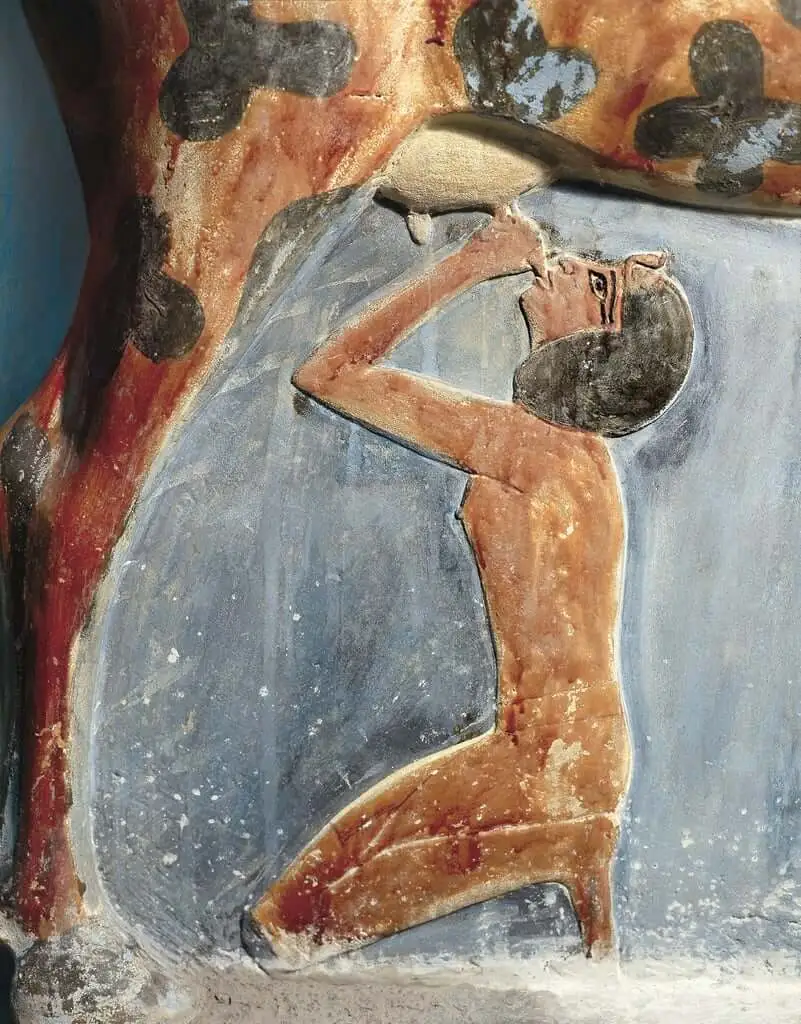
The artistic style reflects the grandeur of New Kingdom sculpture, with finely carved features and idealized proportions.

